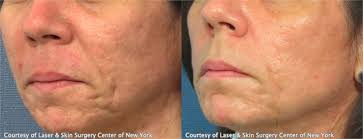Overview of Acne scars treatment
Acne scars treatment are usually the result of inflamed blemishes caused by skin pores engorged with excess oil, dead skin cells and bacteria. The pore swells, causing a break in the follicle wall. Shallow lesions are usually minor and heal quickly. But if there is a deep break in the wall of the pore, infected material can spill out into surrounding tissue, creating deeper lesions. The skin attempts to repair these lesions by forming new collagen fibers. These repairs usually aren’t as smooth and flawless as the original skin.
Why treat acne scarring
- Physical, emotional and social reasons for treating acne scars treatment include:
- Improved appearance
- Enhanced self-esteem
- Promotion of better skin health
What you need to know
There are two main types of acne scars treatment:
Hypertrophic or keloid scarring: These scars are caused when the body produces too much collagen as acne wounds heal, resulting in a mass of raised tissue on the skin’s surface.
Atrophic or depressed scarring: These scars develop when there is a loss of tissue. There are two common types of atrophic scarring. “Icepick” scars are usually small, yet obvious holes in the skin. “Boxcar scars” are depressed areas, usually round or oval in shape with steeply angled sides, similar to chickenpox scars.
Acne scar causes
Acne inflammation can often wound the skin. As acne wounds heal, an abundance of collagen can be left behind, forming acne scars treatment that make the skin appear uneven.
Acne can also cause post-inflammatory hyperpigmentation (PIH), a skin discoloration left behind after an inflamed acne wound has caused over-production of melanin in the skin. PIH is not true acne scarring, however, and will usually fade over time.
Acne scar removal
The first step in treating acne scars is to stop new acne from forming. From there, acne scar treatments should be customized based on your skin and scars.
For small, shallow scars, dermal fillers work well. Deep acne scarring is more likely to require surgical excision combined with a series of dermabrasion treatments or aggressive laser peels.
Where to consult:
drskinhairlaser@gmail.com






